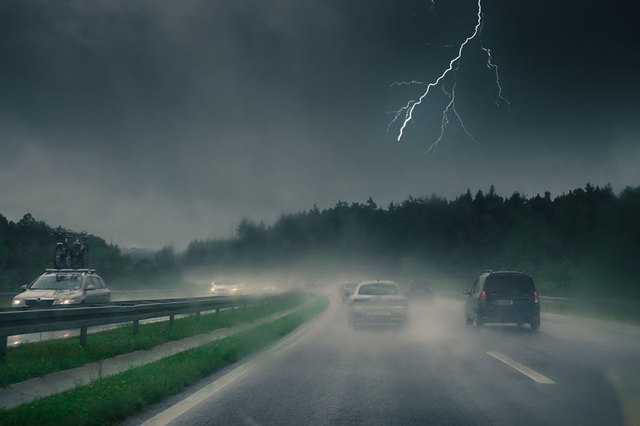Stormy weather can be an inconvenience for several reasons, and driving may be one of your primary concerns. Decreased visibility and concurrent weather hazards such as hail, wind, and flash floods make braving the roads risky when thunder or lightning strikes.
Driving in a storm is best avoided altogether, and The American Safety Council suggests waiting out a storm with your vehicle parked and the emergency brake engaged.
Safety Tips for Driving in a Thunderstorm
While it is recommended that you wait for the storm to pass through before getting on the road, there are precautions you can take to reduce your risk of an accident.
- Keep your doors and windows closed. It may seem obvious, but it is vital to make sure you are safely enclosed in your vehicle should lightning strike.
- Drive slowly, preferably below the speed limit. As traction issues, puddles, and wind can affect your position on the roadway, make sure that you decrease your speed.
- Don’t tailgate. While this tip is consistent with general driving practices, it is especially important when driving in bad weather. Make sure to leave the appropriate amount of space between your car and the car in front of you.
- Turn your lights on. With decreased visibility during a storm, it is important to turn on your headlights.
- Follow local hazard light laws. Familiarize yourself with laws regarding hazard lights, as states like Florida, Massachusetts, Rhode Island, among others, prohibit the use while driving. Hazard lights have the potential to cause more confusion, leading other drivers to think your car is braking, turning, or stopped on the roadway.
- Wait to cross bridges. During a storm, bridges are more likely to collapse. Avoid bridges if possible until the storm has passed.

